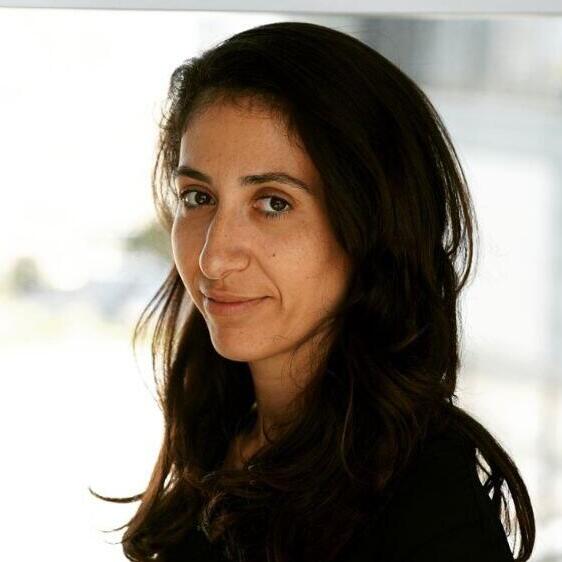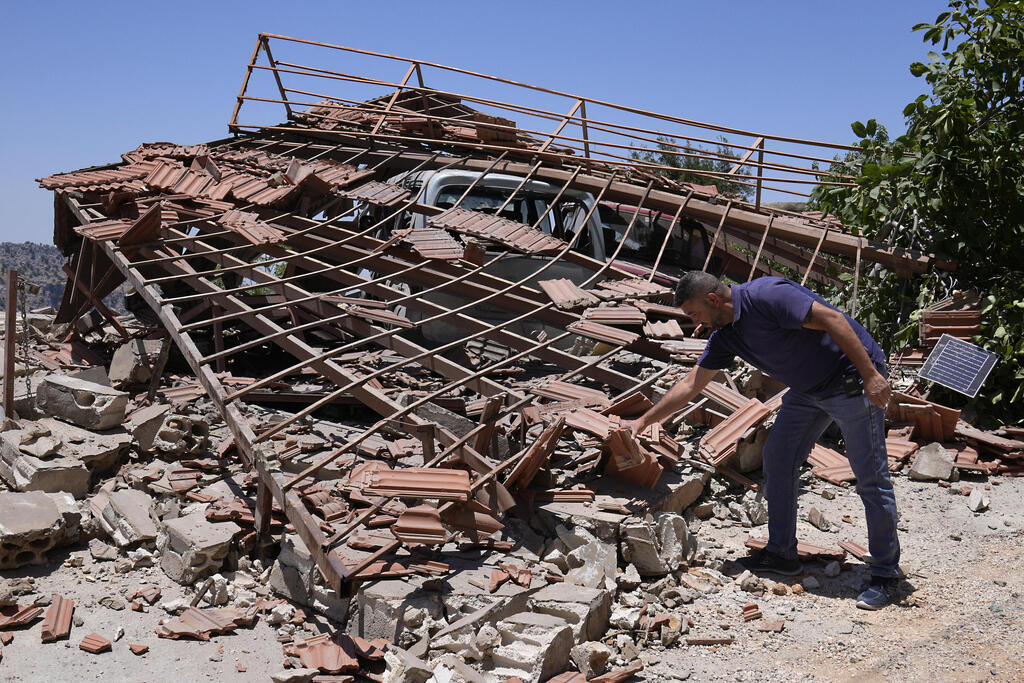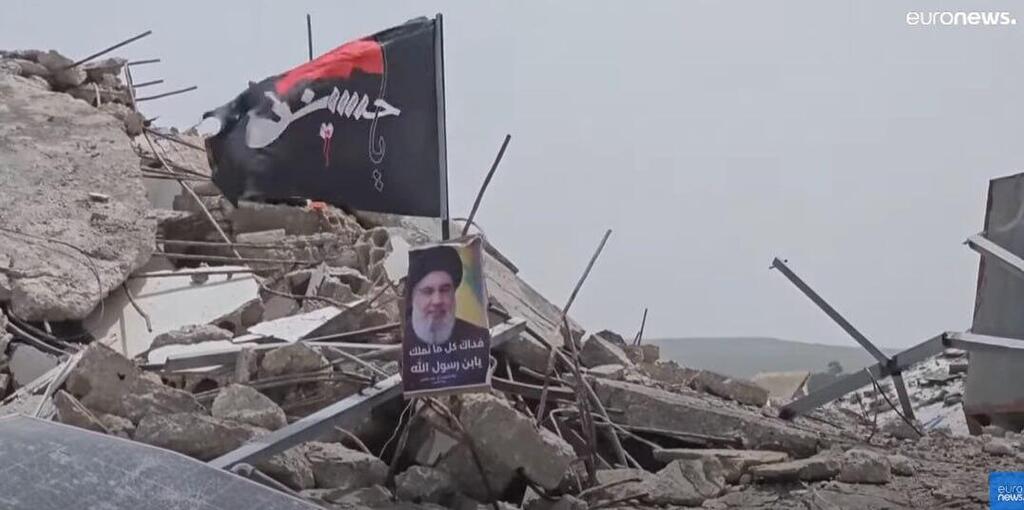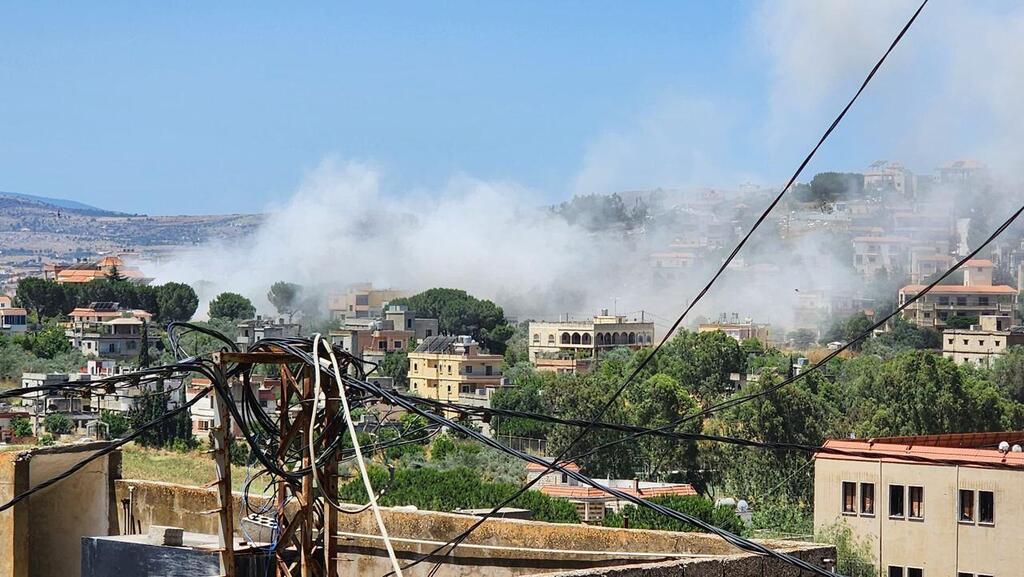Arab networks recently documented southern Lebanese villages amid the devastation from IDF airstrikes. Residents who chose to stay in the ravaged villages attempted to signal business as usual despite the dangers.
During last month's Eid al-Adha celebrations, Hezbollah-affiliated Al Manar broadcast footage showing southern Lebanese residents returning home for the holiday, walking around border villages and participating in mass prayers. Despite the festive scenes, the ruined houses in the background were unmistakable.
An Al Manar correspondent reported from southern Lebanese villages during Eid al-Adha, capturing residents traveling through the village of Belida, less than a mile from the Israeli border.
"We are now in the village of Belida," he said in the video. "The village has endured dozens of Israeli attacks attempting to destroy the village houses," he added, with ruined homes visible along the road. Belida has faced repeated attacks since the beginning of the war, even in recent days.
Footage of empty villages
The correspondent also visited the nearby village of Meiss El Jabal. Apart from the road he traveled, the streets were empty, and the surrounding houses were nearly destroyed. In Meiss El Jabal, he spoke with the village's imam, who praised "the resilience of the remaining residents."
He also interviewed the sister of a slain Hezbollah operative, who declared, "We will not leave this land. We chose confrontation, and we are not afraid. We are ready to give ourselves, our children, our spouses, our money and everything we have for this path and for Hezbollah. We are strong."
Several weeks ago, Hezbollah-affiliated Al Akhbar published a video from the village of Marwahin in southern Lebanon. The channel's X account noted that due to its location, it has become one of the villages most at risk from IDF attacks. The villagers abandoned the area, with more than half of the houses destroyed.
Marwahin is located directly across from Kibbutz Zar'it. According to Al Akhbar, all movement in the village ceased on the first day of the fighting. By June, 53 houses were destroyed and another 60 were partially damaged. The reservoir, critical for irrigating fields and livestock, was also damaged.
A local resident interviewed for the media showed her home in the devastated area and said, "We show the Jews that we are not afraid. Everything you see here will be even better."
A senior IDF official commented, "This is not a buffer zone. We just want to push Hezbollah back. We have no problem with UNIFIL or Lebanese civilians staying there. But we need to clear Hezbollah from the area. Its operatives pose a direct threat to Israeli homes through sniper fire, anti-tank missiles, infiltrations and other means. This is a tactical necessity to ensure the security of Israeli residents."
According to the Financial Times, the area adjacent to the border has become uninhabitable and a de facto buffer zone, which is a strategic asset for Israel. This buffer zone was intended to keep Hezbollah away from the border under United Nations Security Council Resolution 1701 which clearly states that Hezbollah must stay north of the Litani River and that there should be no armed individuals in southern Lebanon except UNIFIL and the Lebanese army.








